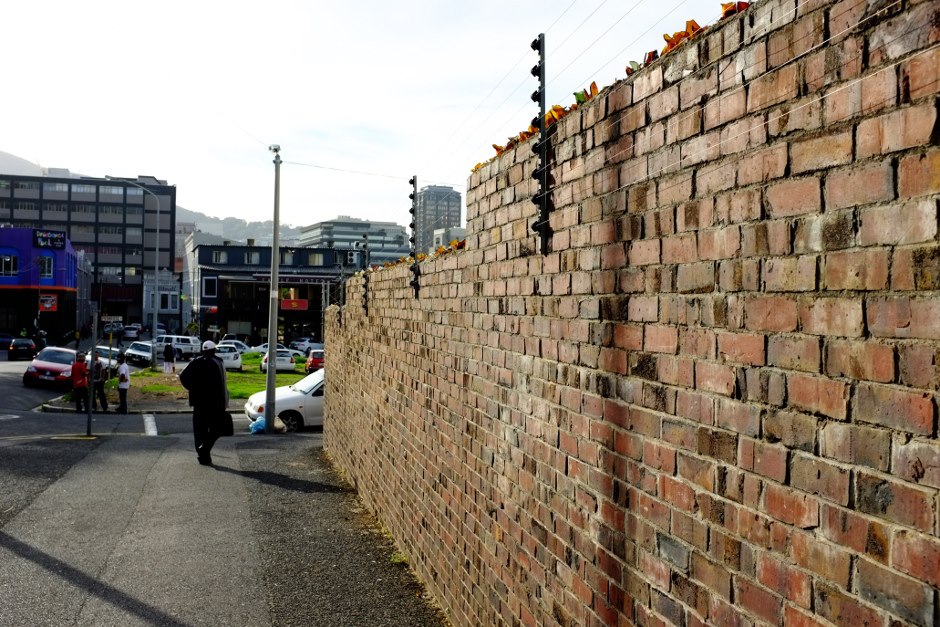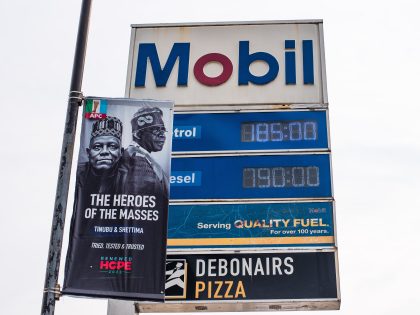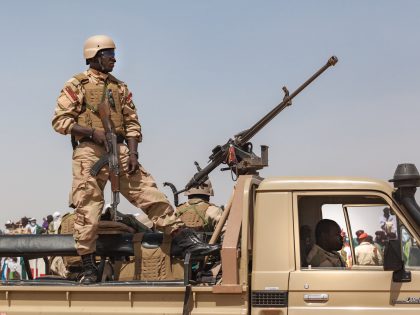The District on Cape Town’s “Fringe”
What it means to belong in post-apartheid urban space and how to reckon with history.

Image of District 6 by Barry Christianson.
Cape Town is changing. One recent Sunday morning I took a walk through Walmer Estate, a suburb bordering on District Six, on the edge of Cap Town’s City Bowl (basically downtown), and stopped at one of the corner stores to inquire about buying some koe’siesters (a local delicacy). Sunday mornings, in the Cape Town of my childhood, are speckled with sweet memories of syrup and sticky coconut flakes (the combined contents of koe’siesters), of milky Ricoffee and the loose, crumply sheets of the Weekend Argus. This Sunday, instead, I was greeted with a quizzical look and response, ‘what’s a koe’siester?’ This may have been an old corner store, frozen in time, but the old time local owner had long left; his candy menagerie now being run by a Pakistani, Bangladeshi or Somali manager. It was as if a bite had been taken out of my dreamy nostalgia.
I took a walk through Woodstock last weekend, strolling down Albert Road for the first time in my life. The Woodstock of Gympie Street, not far from where local gang leader Rashaad Staggie was brutally beaten and burnt to death, and the notorious Lower Main Road. Yet, to my surprise, I found a thronging white public perambulating eagerly up and down the road, flocking between the ‘White Market’, the ‘White Mall’, the barbers, coffee shops and boutiques that appear to service a predominantly white clientele. Struck by the banality of safety that had enveloped the area, I also wondered how often this public patronized the local, established corner cafes, perhaps to enquire about koeksisters? If it was not obvious enough, the scrambling posse of black parking attendants flashing their tatty cardboard signs, desperately calling out ‘Biscuit Mill Parking’, seemed to declare that ‘here, brother, things have changed’.
Urban spaces change. Cities transform. Trying to come to terms with these reverberations around public space in Cape Town, the African Centre for Cities, through their PublicCulture Lab, and in collaboration with the District Six Museum hosted a public discussion on “District Six on the Fringe: the absence of memory in design-led urban regeneration.” The discussion focussed on a specific patch of ground designated The Fringe in a quarter on the edge of what is now termed the East City. The Fringe is more than a mere designation. It is a branded geographical enterprise that, it is claimed, aims to uplift and renew a deteriorating, decayed expanse of urban space on the edge of the inner city. Officials steering the project aim to revitalise the social and economic life of the area through re-casting it as a design and innovation district that will become a flourishing socio-economic district.
It was this set of claims that panelists came to debate and grapple with. The panel consisted of presentations delivered by Kai Berthold speaking on his project The Gentrification Relay, artist Andrew Putter speaking about his work with the Cape Town Partnership, Bonita Bennett representing the District Six Museum, and Ismail Farouk representing the PublicCulture Lab at the African Centre for Cities.
Kai presented research his been doing with the nearby Cape Peninsula University of Technology design students about the change that was taking place in the area. The barefoot, bald and blue jacketed Andrew Putter followed, presenting his case for working with the Cape Town partnership, and his work on transforming Harrington Square—the square between Charley’s Bakery and Woodheads Leather Dealers—into a vibrant public space. Spicing his monochrome PowerPoint presentation with images of the various, largely disenfranchised stakeholders with an interest in the development, he created the impression of being genuinely empathetic and deeply concerned about inclusion and empowerment. Exhibiting a heart-warming collage of images of the homeless, the transient and virtually invisible publics that occupy and move through the space, the presentation also served as a tableau of the very people that, as the history of such projects show, are the first to be cleared out. They’re just not cool enough.

The social, political and economic heart of the matter was cracked open by Bonita Bennett in her sketch of the District Six Museum’s position or at least discomfort with the notion of The Fringe. For one, she pointed out, The Fringe is an edgy, current, catchy term that immediately negates the very politics of belonging, inclusion and marginalization that imbues the very ground designated for urban renewal. If The Fringe was meant to designate the periphery, Bennett pointed out that historical narratives of former District Six residents make no distinction between the city centre and the periphery. How then does such sanitized, gimmicky language of redesignation enter into a politics of belonging and inclusion in the city? Taking into account the history of some of the first forced removals and the creation of locations that functioned as a kind of septic fringe, does the use of this language and concept serve to break with these legacies or does it merely coat them with a inclusive veneer of exposed steel and glass that continue to keep the marginalised out, visible and at a distance?
Ismail Farouk reaffirmed these issues in his presentation. Comparing The Fringe initiative and others like it around Cape Town to ventures pioneered in Braamfontein and other parts of the Johannesburg cityscape, he tried to tease out the implications of Cape Town’s inscription as a corporate city, and the imagineering that takes place around such projects. One of his poignant observations was that the fundamental problem with these developmental initiatives is their logic of time. These projects are almost always speculative property ventures that hedge against the possibility of future economic potential of a particular urban space. This is at the expense of the reality of the present and those who occupy the spaces that apparently bare economic potential. The consequences of such framings of time, suggests Farouk, are that they buy time, suspending the fulfillment of the pressing needs of the disenfranchised with the promise of immanent future redemption that never arrives. It also negates time, obscuring the histories of social life and suffering that attach to these urban spaces and render them free for acquisition by those with means. This frames one of his central questions: ‘does The Fringe provide an effective institutional framework to drive social transformation, or merely serve to further entrench legacies of segregation and dispossession that characterise the history of Cape Town?’

Times have certainly changed, and the city of Cape Town is changing. Sunday koeksisters are no more and the mean streets have lost their edge. Yet coming to terms with these transformations does not merely entail nostalgically grasping for sweet, romantic pasts and vacuously arguing for their ossified preservation. It is, instead, as Bonita Bennett pointed out, about thinking of memory, history and heritage not as décor that comes after, but as the very stuff at the heart of projects that reimagine the city. In other words, it means placing the history and politics of struggle against unjust dispossession at the centre and not on the fringe of our thinking about the future of the city and what it means to belong in post-apartheid urban space.
- Thanks to Barry Christianson for use of his pictures. Follow his photoblog.



















